How to build a winning saas sales funnel: An expert Guide in 2024
Introduction:
A sales funnel is a sequential process that guides prospects from initial contact to conversion. For a SaaS company, a SaaS sales funnel plays a crucial role in attracting, nurturing, and converting potential users into loyal customers. By providing a structured approach, optimizing conversion rates, enabling targeted marketing, and gaining valuable customer insights, a well-designed sales funnel for SaaS is essential for the success of SaaS companies.
Key Takeaways:
What are the SaaS sales funnel Stages?
- Awareness: The awareness stage focuses on creating awareness of your brand and attracting potential customers to your SaaS sales funnel. It employs strategies such as content marketing, SEO, social media, and paid advertising to increase brand awareness and traffic to a website or landing page.
- Interest: Once prospects know about your SaaS product, the interest stage aims to capture and nurture their interest. This involves showcasing the value proposition, highlighting unique selling points, and providing informative content to engage and educate prospects.
- Consideration: In the consideration stage, prospects evaluate your SaaS solution as a potential fit for their needs. This middle-of-funnel stage often includes providing in-depth product information, offering free trials or demos, and leveraging customer testimonials or case studies to build credibility and address concerns.
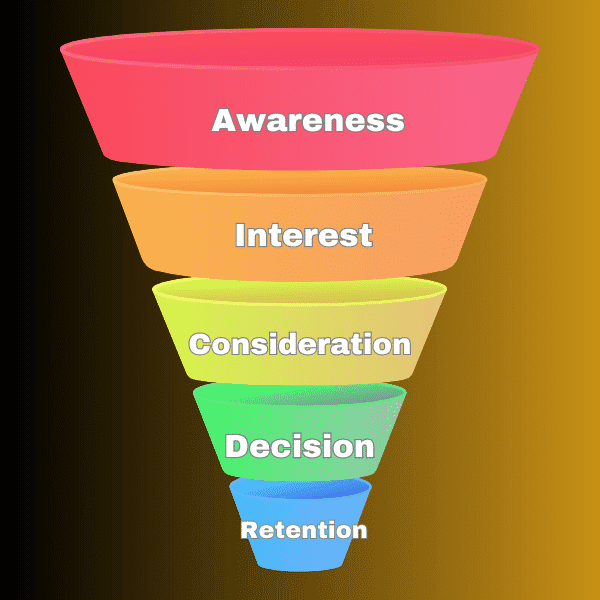

- Decision: In this stage, prospects are ready to decide. Streamlining the purchasing process, providing clear pricing and packaging options, and offering incentives or limited-time offers to encourage conversion is crucial. Personalized messaging and follow-ups can also help nudge a prospect toward becoming a paying customer.
- Retention: The saas sales funnel doesn’t end with the purchase. The customer retention stage focuses on ensuring customer satisfaction, maximizing their usage of the SaaS product, and fostering long-term loyalty. This involves implementing customer success programs, automated onboarding processes, and upselling or cross-selling opportunities.
By understanding and optimizing each saas sales funnel stage, businesses can effectively guide prospects from initial awareness to becoming happy and loyal customers.
Awareness:
How do you define your target market and buyer personas?
Defining your target audience and buyer personas is critical in building a successful SaaS sales funnel. Here’s a deeper explanation:
1. Target Audience:
Target Audience: Your target audience refers to the individuals or businesses most likely to benefit from and be interested in your SaaS product. It’s essential to clearly understand your target audience, as it forms the foundation for all your marketing and sales efforts.
Consider demographics (age, gender, location), industry or niche, job titles or positions, company size, and pain points or challenges your SaaS product can address when defining your target audience. By identifying and comprehending your target audience, you can customize your messaging, marketing strategies, and content to engage and resonate with them effectively.
2. Buyer Personas:
Buyer personas are fictitious, generalized representations of your target audience’s ideal customers. They are created based on research, data, and insights about your existing customers and prospects. Buyer personas help humanize your target audience and provide deeper insights into their motivations, goals, behaviors, and pain points.
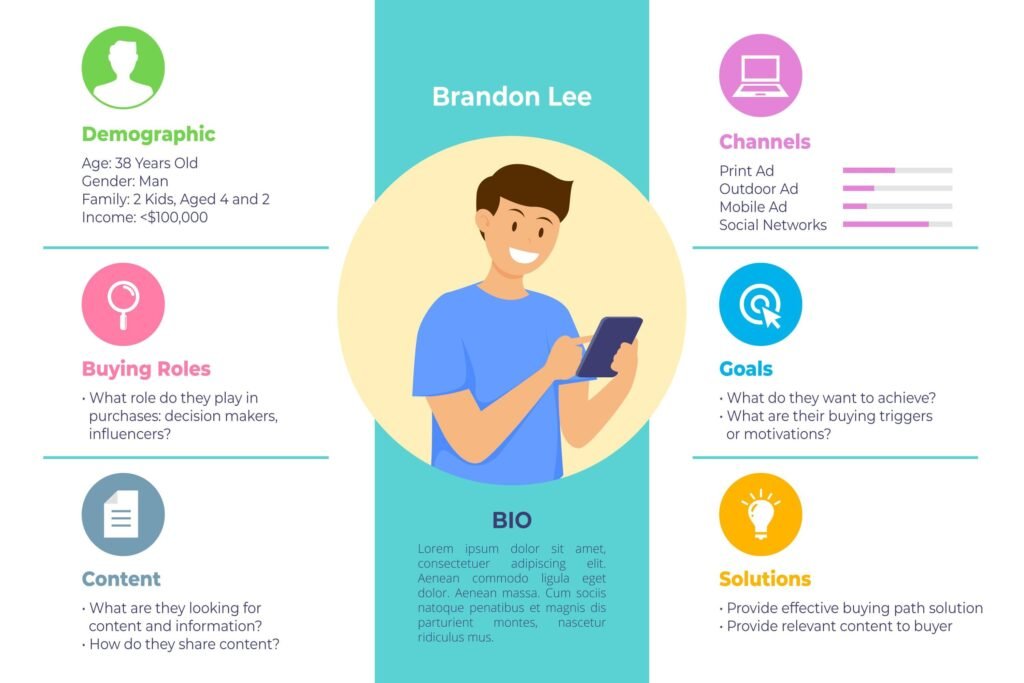

Image by Freepik
When creating buyer personas, consider job responsibilities, goals and objectives, preferred communication channels, information sources, objections or concerns, and decision-making criteria. This information lets you personalize your marketing and sales efforts, create more targeted content, and tailor your messaging to resonate with each persona’s specific needs and preferences.
By defining your target audience and creating detailed buyer personas, you can align your marketing strategies, content creation, and lead-generation efforts to attract the right prospects. This understanding enables you to develop messaging that speaks directly to your audience, address their pain points, and position your SaaS product as the ideal solution.
What is Building brand awareness through content marketing, SEO, and social media?
Building brand awareness through content marketing, SEO, and social media is a key strategy to attract and engage prospective buyers:
1. Content Marketing:
Content marketing entails creating and distributing valuable, pertinent, and informative content to attract and engage your target audience. This can include blog posts, articles, videos, infographics, podcasts, and other formats.
By consistently making high-quality content that fits the interests and wants of your target audience, you can drive organic traffic to your website, raise brand awareness, and make your saas sales funnel a trusted, reliable resource.
2. SEO (Search Engine Optimization):
SEO is crucial in improving your website’s visibility in search engine results. You can increase organic traffic and attract qualified leads by optimizing your website and content for relevant keywords and phrases your target audience searches for.
Effective SEO practices include conducting keyword research, optimizing on-page elements (titles, headings, meta descriptions), creating quality backlinks, improving site speed, and ensuring mobile-friendliness.
3. Social Media:
Social media platforms provide an excellent opportunity to amplify your brand’s reach, engage with your target audience, and promote your SaaS sales funnel. Creating and sharing compelling content on social media platforms such as Facebook, Twitter, LinkedIn, and Instagram can increase brand recognition and drive traffic to your website.
Leverage paid advertising channels to reach a wider audience:
Utilizing paid advertising channels effectively allows SaaS companies to expand their brand’s reach and visibility.
Paid advertising channels involve investing in advertising campaigns on various platforms to promote your SaaS solution. These channels offer the advantage of reaching a broader audience beyond organic reach and targeting specific demographics or interests. Here are some popular paid advertising channels:
- Search Engine Advertising (SEM): SEM, often called pay-per-click (PPC) advertising, allows you to display ads on search engine result pages, such as Google Ads. You bid on keywords relevant to your SaaS product, and your ads appear when users search for those keywords.
- Display Advertising: Display advertising involves placing visual ads, such as banners or text-based ads, on websites that are part of ad networks. These ads can be very specific to your target group based on their age, gender, interests, or websites they visit.
- Social Media Advertising: Platforms like Facebook Ads, Instagram Ads, Twitter Ads, and LinkedIn Ads offer powerful targeting options to reach specific audiences based on demographics, interests, behaviors, and job titles.
- Native Advertising: Native advertising involves promoting your SaaS solution within the natural content flow of relevant websites or platforms. These ads blend with the surrounding content, providing a seamless user experience.
- Video Advertising: Video advertising, often seen on platforms like YouTube, allows you to create engaging video content that showcases your SaaS solution. These ads can be shown to people based on their demographics, hobbies, or even specific YouTube channels or videos.
By leveraging paid advertising channels, SaaS companies can reach a wider audience beyond organic reach, target specific demographics or interests, and increase brand visibility.
Create compelling lead magnets and gated content to capture leads in saas sales funnel
Creating compelling lead magnets and gated content is a powerful strategy for capturing leads and nurturing prospects within your SaaS sales funnel:
1. Lead Magnet of saas sales funnel
You offer potential customers valuable resources or incentives in exchange for their contact information, usually their email addresses.
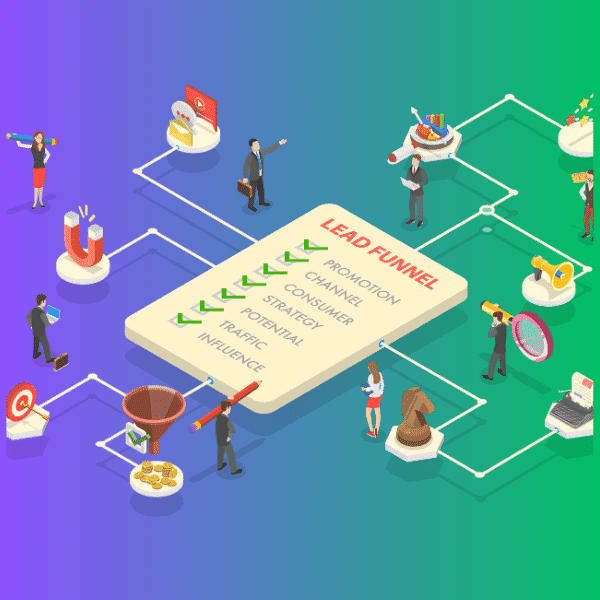

Lead magnets can take various forms, such as ebooks, whitepapers, checklists, templates, guides, webinars, or free trials. The key is to create something that aligns with your target audience’s interests, offers practical solutions, and demonstrates your expertise in the industry.
2. Gated Content:
Gated content refers to valuable content hidden behind a form or a “gate” on your website or landing page. Visitors must complete a form providing their contact details to access the content.
The purpose of gated content is to capture leads by offering highly valuable and exclusive information that prospects are willing to exchange their contact information for.
By offering valuable resources that address your target audience’s pain points, you can attract and engage potential buyers while also building a qualified and engaged email list for ongoing marketing efforts within your sales funnel.
Interest:
Develop a compelling value proposition and unique selling points (USPs)
SaaS companies must develop a strong value strategy and unique selling points (USPs) to stand out in the market and attract new customers:
1. Value Proposition:
Your value proposition is a concise statement that communicates the unique value and benefits your SaaS solution provides to customers. It answers the question, “Why should customers choose your SaaS product over competitors?”
To develop a compelling value proposition, you must identify the specific problems or challenges your SaaS product solves for customers. Communicating the benefits your consumers will receive from using your solution should be the primary focus of your value proposition.
2. Unique Selling Points (USPs):
Unique selling points are the specific features, qualities, or advantages that set your SaaS product apart from competitors. They highlight the distinctive aspects that make your solution more appealing and valuable to potential clients.
You must thoroughly analyze your SaaS product and the competitive landscape to identify your USPs. Consider factors such as innovative features, performance, ease of use, scalability, integrations, customer support, pricing model, or any other aspect that provides a competitive advantage.


Developing a compelling value proposition and unique selling points is essential for SaaS companies to differentiate themselves, attract potential customers, and effectively position their solutions in the market.
Optimize your website for conversions and user experience
Optimizing your website for conversions and user experience is crucial for SaaS companies to maximize the effectiveness of their b2b SaaS sales funnel:
1. Conversion Optimization:
Conversion optimization focuses on enhancing the website’s elements and user flow to increase the proportion of visitors who perform the desired actions, such as registering for a free trial, requesting a demo, or making a purchase.
To optimize conversions on your website, consider the following strategies:
- Clear Call-to-Action (CTA): Place prominent and compelling CTAs throughout your website that guide visitors toward the desired actions. Use persuasive language, contrasting colors, and strategically position CTAs to draw attention.
- Streamlined Forms: Keep your forms simple, asking for only essential information. Minimize the number of fields and make the form-filling process as easy as possible.
- Social Proof: Display customer testimonials, case studies, reviews, and trust signals to build credibility and trust with visitors.
- A/B Testing: Conduct A/B tests to compare different variations of your website elements, such as headlines, CTAs, colors, or layouts. Testing allows you to identify the most effective elements and optimize for increased conversions.
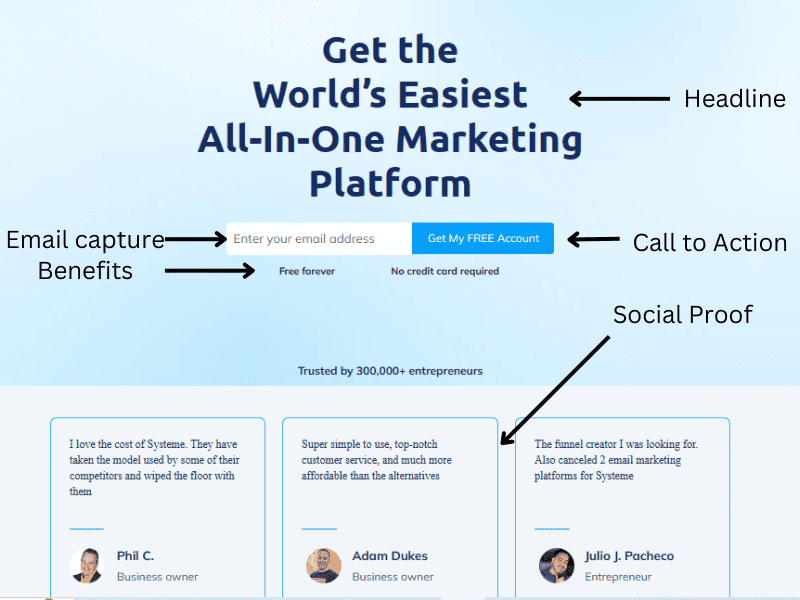

Source: System.io landing page



Systeme.io
Systeme.io is the best way to start and scale your online business. It gives you everything you need to create sales funnels, landing pages, email campaigns, online courses, and more. And it’s incredibly affordable – you can get started for free and pay as you grow. Don’t miss this opportunity – sign up for the Free Version Forever Plan now.
2. User Experience (UX) Optimization:
User experience optimization focuses on enhancing visitors’ overall experience on your website. A good user experience makes people more interested, keeps them on the site longer, and makes it more likely that they will buy something.
Continuously monitor and analyze website analytics, conduct user testing, and gather feedback to identify areas for improvement. Regular optimization based on data and user feedback will help you improve the speed of your website, increase conversions, and give users a good experience that fits with your sales funnel goals.
Related Article: “Sales Funnel vs Website: Which is Better?”
Implement live chat or chatbot functionalities for real-time engagement
Implementing live chat or chatbot functionalities on your website is an effective strategy for real-time engagement with visitors.
1. Live Chat:
Live chat is a customer support tool that enables real-time conversations with website visitors. It allows users to ask questions, seek assistance, or get immediate responses to their queries. Implementing live chat offers several benefits:
- Instant Communication: Live chat provides a quick and convenient way for visitors to get answers or assistance without waiting for email responses or making a phone call. It offers real-time communication, enhancing the overall user experience.
- Personalized Support: Live chat offers personalized support by addressing visitors’ questions or concerns. You can tailor your responses based on customers’ needs, guiding them through the sales funnel and providing relevant information to facilitate their decision-making process.
- Lead Generation: Live chat presents an opportunity to convert website visitors into leads. You can call them again later if you get their contact information during the chat, keep the relationship going, and move them down the sales funnel.
- Customer Satisfaction: Live chat support demonstrates your commitment to customer satisfaction. It shows that you are readily available to assist, which builds trust and can positively impact the customer experience.


Implementing live chat or chatbot functionalities on your website enhances real-time engagement, improves customer experience, and provides immediate support and assistance to visitors.
Nurture leads through email marketing campaigns and drip sequences
Nurturing leads through email marketing campaigns and drip sequences is a crucial strategy for SaaS companies to engage with prospects, build relationships, and guide them through the SaaS sales funnel:
1. Email Marketing Campaigns:
Email campaigns involve sending targeted and personalized emails to leads to nurture them and move them closer to making a purchase. Here’s how it works:
- Segmentation: Segment your leads based on their characteristics, interests, or behaviors. This lets you tailor your email content and offers to specific segments, increasing relevance and engagement.
- Welcome Emails: Send a series of welcome emails to new leads to introduce your company, provide valuable resources, and set expectations.
- Educational Content: Provide valuable and educational content to your leads through emails. This can include blog posts, case studies, industry reports, guides, or webinars. The content should address their pain points, demonstrate your expertise, and provide solutions.
- Product Education: Share information about your SaaS product, its features, and its benefits. Highlight how it solves specific problems and meets the needs of your leads.
- Offers and Promotions: Introduce special offers, discounts, or promotions to incentivize leads to take the next step in the SaaS sales funnel
2. Drip Sequences:
Drip sequences are a series of automated, pre-planned emails that are sent to leads at specific intervals. Drip sequences allow you to deliver a consistent and strategic message to leads over time.
- Lead Nurturing: Drip sequences help nurture leads by delivering a sequence of targeted emails that gradually provide more information, address objections, and guide leads toward making a purchase decision.
- Personalization: Tailor your drip sequences based on the lead’s behavior, preferences, or stage in the SaaS sales funnel. This makes sure that the content is appropriate and meets their wants.
- Progressive Content: Start with introductory and educational content, gradually moving towards more product-focused content as leads progress through the drip sequence.
- Call-to-Action (CTA): Include clear and compelling CTAs in each email of the drip sequence. CTAs can encourage prospects to take particular actions, such as registering for a free trial, attending a webinar, or scheduling a demonstration.
Consideration:
Provide detailed product information and specifications
Providing detailed product information and specifications is essential for SaaS companies to effectively communicate the features, capabilities, and value of their product to potential customers:
- Product Descriptions: Clearly articulate your SaaS product’s features, functionalities, and benefits. Reduce difficult concepts to simple language and emphasize how your product solves specific problems or meets the requirements of your target audience.
- Technical Specifications: Include technical specifications and relevant details to your target audience. This may include information about system requirements, compatibility, scalability, security measures, integrations, and API documentation.
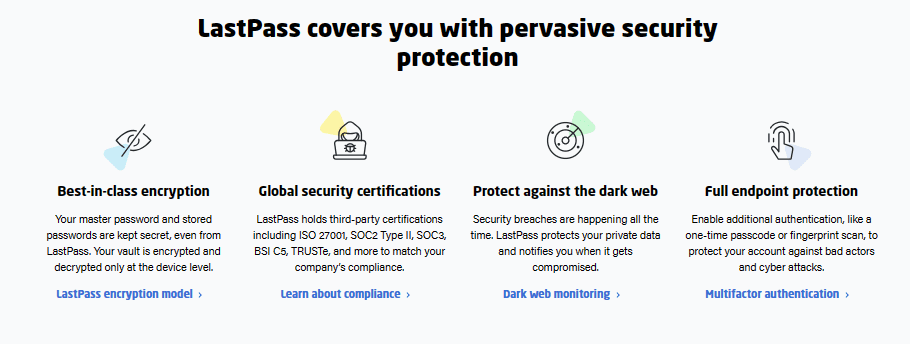

- Use Cases and Examples: Provide real-world use cases and examples that demonstrate how your SaaS product can be applied to solve common challenges. This helps potential customers visualize how your solution can benefit their industry or business.
- Demo Videos and Interactive Demos: Create engaging videos or interactive demos showcasing your SaaS product’s key features and functionality. These visual demonstrations allow potential customers to see your product in action, understand its user interface, and experience its benefits firsthand.
- Comparison with Competitors: Highlight your SaaS product’s unique advantages and differentiators compared to competitors. Provide a detailed analysis of how your product outperforms or offers distinct benefits over alternatives.
Providing detailed product information and specifications is crucial for SaaS companies to communicate their product value and benefits effectively. By offering clear descriptions, technical details, use cases, and demonstrations, you empower potential customers to evaluate your solution and make informed decisions.
Offer free trials or demos to showcase your SaaS solution
Offering free trials or demos is a powerful strategy for SaaS companies to showcase the value, functionality, and benefits of their software solution:
1. Free Trials:
A free trial allows potential customers to experience your SaaS solution firsthand, typically for a limited time. Here’s how it can benefit your saas sales funnel:
- Hands-on Experience: A free trial allows potential customers to explore your SaaS product’s features, user interface, and capabilities. They can engage with the software, test its functionalities, and understand how it can address their specific needs.
- User Engagement and Activation: During the free trial, you can actively engage with potential customers, providing guidance and support to help them maximize their experience.
- Proving Value: A free trial allows potential customers to assess the value and benefits of your SaaS solution in their context. They can evaluate its impact on their workflows, productivity, or cost savings.
- Conversion Optimization: During the free trial, you can track user behavior, collect feedback, and analyze usage patterns. This data helps you identify user engagement metrics, conversion bottlenecks, or areas for improvement.
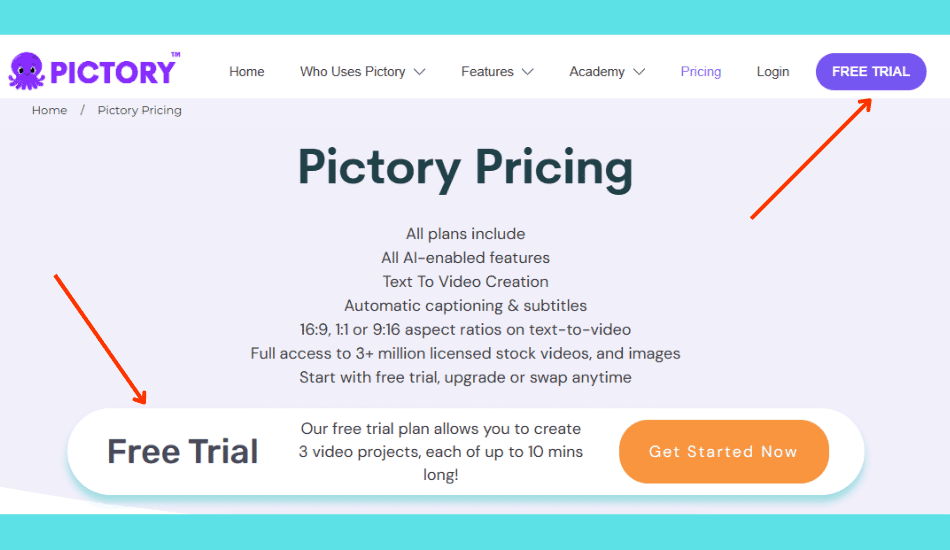

2. Demos:
Demos provide a guided tour or presentation of your SaaS solution, showcasing its key features, functionalities, and benefits. Here’s how demos can benefit your saas sales funnel:
- Targeted Presentations: Demos allow you to tailor the presentation to potential customer’s specific needs and interests. You can focus on the features and use cases that resonate most with their industry, business size, or pain points.
- Addressing Pain Points: During the demo, you can highlight how your SaaS solution addresses potential customer’s pain points and challenges.
- Customization and Personalization: Demos can be customized to reflect potential customers’ branding and unique requirements.
- Q&A and Objection Handling: Demos permit prospective customers to pose inquiries and voice concerns. This enables you to counter objections, dispel doubts, and assure the capabilities and suitability of your SaaS solution.
Implement customer testimonials and case studies for social proof
Implementing customer testimonials and case studies is a powerful strategy for SaaS companies to provide social proof and build credibility with potential customers:
1. Customer Testimonials:
Customer testimonials are statements or reviews from satisfied customers who have used and benefited from your SaaS solution. Here’s how they can benefit your sales funnel:
- Trust and Credibility: Customer testimonials serve as social proof, demonstrating that real customers have successfully used and appreciated your SaaS solution. They build trust and credibility, especially when potential customers can relate to the industry, size, or pain points of the customers providing the testimonials.
- Validation of Claims: Testimonials validate your claims and promises about your SaaS solution.
- Emotional Connection: Testimonials can create an emotional connection with potential customers. When they read about the positive experiences and outcomes of others, they can envision themselves achieving similar results with your SaaS solution.
- Variety of Formats: Testimonials can be presented in various formats, such as written quotes, video testimonials, or audio recordings.
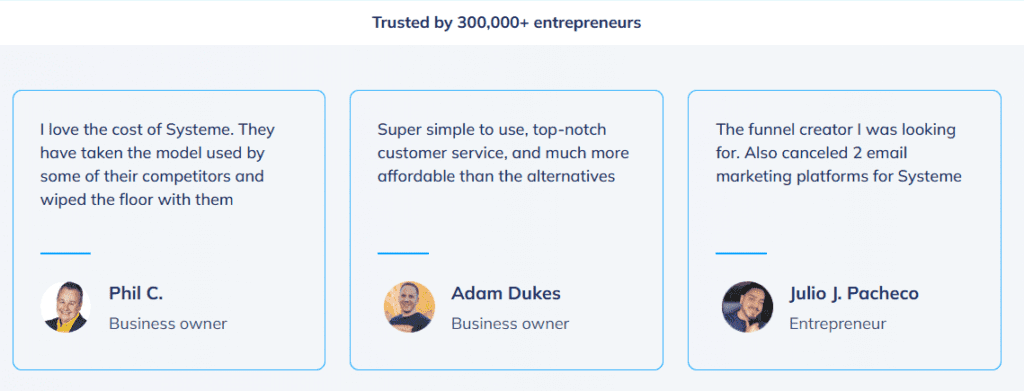

2. Case studies:
These are in-depth analyses of how your SaaS solution has helped specific customers overcome challenges and achieve their goals. Here’s how they can benefit your saas sales funnel:
- Detailed Success Stories: Case studies provide a detailed narrative of how your SaaS solution has been applied in real-world scenarios. They explain the customer’s initial challenges, the implementation process, and the measurable results achieved.
- Industry Relevance: Case studies highlighting successful implementations within the same industry or similar business contexts as potential customers can be particularly persuasive.
- Proof of ROI: Case studies often include information about the return on investment (ROI) customers achieve through your SaaS solution. This data-driven evidence demonstrates the financial benefits and business value that your product can deliver.
- Problem-Solution Alignment: Case studies showcase how your SaaS solution addresses specific customer pain points and challenges.
Personalize the sales process with targeted messaging and follow-ups
Personalizing the sales process with targeted messaging and follow-ups is a crucial strategy for SaaS companies to engage potential customers on an individual level and increase the effectiveness of their sales efforts:
1. Targeted Messaging:
Tailoring your messaging to address each potential customer’s needs, pain points, and interests can significantly impact their engagement and response. Here’s how you can personalize your messaging:
- Research and Segmentation: Conduct thorough research to understand your potential customers’ industry, business size, challenges, and goals. Segment your audience based on these criteria and develop targeted messaging that speaks directly to their unique situation.
- Personalized Outreach: When reaching out to potential customers, use their name and reference specific details you’ve gathered about their business.
- Benefits-Focused Approach: Emphasize the specific benefits and outcomes that potential customers can expect using your SaaS solution. Tailor your messaging to highlight how your product aligns with their needs and offers a tailored solution.
- Customized Content: Share relevant content, such as blog posts, case studies, or resources, that specifically address the challenges or interests of each potential customer.
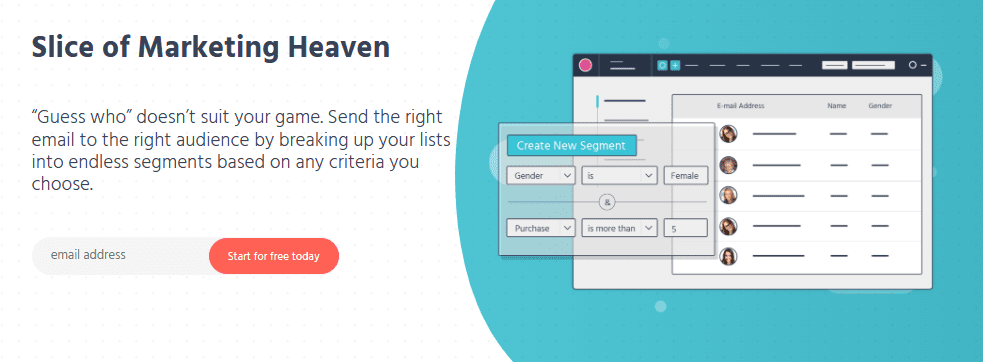

2. Follow-ups:
Following up with potential customers is crucial to keep the sales process moving forward and increase the chances of conversion.
Decision:
Streamline the purchasing process and reduce friction
Streamlining the purchasing process and reducing friction is crucial for SaaS companies to facilitate a smooth and seamless experience for potential customers:
1. Simplified Checkout Process:
Simplifying the checkout process helps potential customers move through the purchasing journey quickly and easily. Here’s how you can streamline the purchasing process:
- Clear and Intuitive Interface: Design an intuitive and user-friendly interface for your checkout process. Ensure that the steps are clearly labeled, the information required is minimal, and the navigation is straightforward.
- Pre-Filled Information: Whenever possible, pre-fill customer information based on previous interactions or data you have collected.
- Multiple Payment Options: Offer various payment options to accommodate different preferences.
- Transparent Pricing and Terms: Communicate the pricing structure, any recurring fees, and the terms of service. Avoid surprises or hidden charges that could create confusion and erode trust.
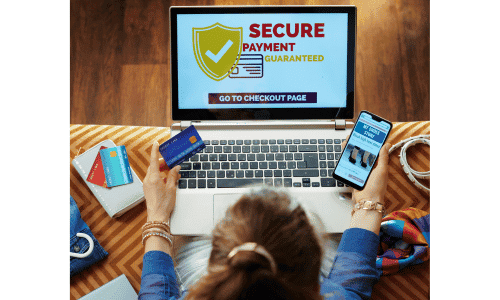

2. Minimized Friction Points:
Identifying and eliminating friction points throughout the purchasing process is essential for a seamless experience.
Implement clear pricing and packaging options
Implementing clear pricing and packaging options is essential for SaaS companies to effectively communicate the value of their software solution and facilitate a transparent and informed purchasing decision for potential customers:
1. Transparent Pricing:
Transparent pricing means clearly and openly communicating the cost of your SaaS solution. Here’s how you can implement clear pricing:
- Simple Pricing Structure: Keep your pricing structure straightforward and easy to understand. Avoid complex tiers or convoluted pricing models that may confuse potential customers.
- Displayed Plans: Present the different pricing plans you offer, along with their features and limitations. Use a comparison table or a format that is easy to understand visually to show the changes between plans. This will make it easy for potential customers to compare the alternatives and choose the best. Pricing Page: Create a dedicated pricing page on your website that provides comprehensive information about your pricing options.
2. Packaging Options:
Packaging options refer to the different bundles or configurations offered by your SaaS solution. Here’s how you can implement clear packaging options:
- Different Plan Tiers: Create different plan tiers that cater to potential customers’ diverse needs and budgets. Each tier should offer a clear and distinct set of features, allowing customers to choose the level of functionality and resources that aligns with their requirements.
- Customization and Scalability: If your SaaS solution allows for customization or scalability, clearly outline the options and pricing associated with these features. Show potential customers how to tailor the solution to their specific needs and how pricing scales as their requirements grow.
Offer incentives, discounts, or limited-time offers to encourage conversion
Offering incentives, discounts, or limited-time offers is a powerful strategy for SaaS companies to motivate potential customers to convert and take action:
1. Incentives:
Incentives are rewards or advantages offered to prospective customers to encourage them to take a certain action, such as purchasing or signing up for a trial. Here’s how you can use incentives to drive conversions:
- Freebies or Add-ons: Offer free additional features, add-ons, or resources that complement your SaaS solution.
- Extended Trials or Experiences: Extend your trial period to give potential customers more time to explore and experience the benefits of your SaaS solutions.
- Upgrade Discounts: Provide discounts or special offers for upgrading to a higher-tier plan or adding more licenses/users.
2. Discounts:
Discounts involve reducing the price of your SaaS solution for a limited period or specific customer segments. Here’s how you can leverage discounts to encourage conversions:
- Percentage Discounts: Offer a percentage-based discount off the regular price of your SaaS solution. For example, a 20% discount for the first year can create value and urgency for potential customers.
- Flat-rate Discounts: Provide a fixed discount, such as $50 off the regular price, as an incentive to potential customers. This type of discount is easy to understand and can be particularly effective for lower-priced products or entry-level plans.
- Bundle Discounts: Create bundle discounts by combining multiple products or services into a package and offering a reduced price for the bundle. This encourages potential customers to choose a more comprehensive solution and obtain greater value.
3. Limited-Time Offers:
Limited-time offers to create a sense of urgency and scarcity, motivating potential customers to take immediate action. Here’s how you can use limited-time offers to drive conversions:
- Flash Sales: Offer a significant discount or incentive for a short period, typically 24-48 hours.
- Seasonal Promotions: Create promotions for specific seasons, holidays, or events. For example, offer a discount for an annual subscription during the holiday season.
- Early Bird Offers: Reward early adopters or customers who commit to your SaaS solution during the pre-launch or early stages.


Provide new customers with a streamlined onboarding experience
Providing a seamless onboarding experience to new customers is crucial for SaaS companies to ensure a smooth transition from the point of purchase to successful usage of their software solution:
1. Clear and Guided Setup:
A seamless onboarding experience begins with a clear and guided setup process that helps new customers get started quickly. Here’s how you can achieve this:
- Welcome Emails or Messages: Send a personalized welcome email or message to new customers immediately after they sign up or purchase. Express gratitude for their choice and provide clear instructions on their next steps to get started.
- Onboarding Checklist or Wizard: Provide a checklist or step-by-step wizard that guides new customers through the initial setup process.
- Clear Instructions and Tutorials: Offer comprehensive instructions and tutorials that explain how to set up and configure your SaaS solution. Use a combination of written guides, videos, and visual aids to accommodate different learning preferences.
- Progressive Profiling: Collect essential information upfront and gradually gather additional details as customers become more familiar with the platform.
2. Proactive Customer Support:
During the onboarding process, providing proactive customer support is essential to address any questions or issues that new customers may encounter:
- Dedicated Onboarding Team: Assign a dedicated onboarding team or representative to guide new customers through the initial stages.
- Live Chat or Instant Messaging: Offer real-time chat support to address any queries arising during onboarding.
- Help Center or Knowledge Base: Develop a comprehensive help center or knowledge base that includes frequently asked questions, troubleshooting guides, and best practices.
3. Educational Resources and Training:
Educational resources and training materials help new customers proficiently use your SaaS solution. Here’s how you can support their learning process:
- Video Tutorials and Webinars: Create video tutorials or host webinars that demonstrate key features and functionalities of your SaaS solution.
- Documentation and User Guides: Develop comprehensive documentation and user guides that cover all aspects of your SaaS solution.
- Training Materials: Offer training materials, such as ebooks, cheat sheets, or interactive courses, focusing on specific topics or advanced usage scenarios.
Retention
Develop a robust customer success program
A customer success program focuses on proactively engaging customers, understanding their requirements, and assisting them in achieving their desired results with your software solution:
- Customer Success Team: Establish a dedicated customer success team or department responsible for managing customer relationships and driving success. This team should be focused on understanding customer goals, providing guidance and support, and acting as a trusted advisor throughout the customer journey.
- Goal Alignment: Work closely with customers to understand their goals, challenges, and desired outcomes. Align your SaaS solution and resources with their objectives to help them derive maximum value.
- Onboarding and Adoption Assistance: Provide comprehensive onboarding support to help customers get up and running smoothly. Offer guidance, training, and resources during the initial stages to ensure customers understand how to use your solution effectively.
- Proactive Engagement: Actively engage with customers continuously to understand their evolving needs, offer assistance, and drive adoption. This can include regular check-ins, account reviews, and proactive outreach to address potential issues or opportunities.
- Customer Health Monitoring: Implement systems and metrics to monitor customer health and identify potential churn or dissatisfaction signs. This can involve tracking product usage, customer feedback, and other relevant data points.
- Value Realization and Expansion: Continuously demonstrate the value of your solution to customers by highlighting their achieved outcomes, ROI, and success stories. Guide how they can maximize the benefits of your SaaS solution and unlock additional value.
- Knowledge Sharing and Education: Develop a robust knowledge base, self-service resources, and educational content that customers can access to enhance their understanding and proficiency with your solution.
- Customer Feedback and Advocacy: Actively seek customer feedback to gather insights, identify areas for improvement, and understand their overall satisfaction. Leverage customer feedback loops, surveys, and user groups to collect and act upon input.
- Renewal and Expansion Management: Proactively manage the renewal process by engaging with customers before their contract expiration. Identify opportunities for expansion, such as additional licenses, upgrades, or feature add-ons.
Leverage upselling and cross-selling opportunities
Leveraging upselling and cross-selling opportunities is a strategy used by SaaS companies to increase revenue by encouraging existing customers to upgrade their subscriptions or purchase additional products or features:
1. Upselling:
Upselling involves encouraging customers to upgrade to a higher-tier subscription plan or package that offers more features, functionality, or resources. Here’s how you can leverage upselling opportunities:
- Usage-Based Triggers: Monitor customer usage patterns and identify opportunities where customers may benefit from additional features or resources. For example, if a customer consistently reaches the limits of their current plan, you can proactively suggest upgrading to a higher-tier plan.
- Value-Based Selling: Demonstrate the value and benefits of upgrading to a higher-tier plan by showcasing the additional features, capabilities, or support that customers would gain.
- Personalized Recommendations: Utilize customer data and segmentation to provide personalized upsell recommendations. Tailor your offers based on each customer’s specific needs, preferences, and usage history to increase the likelihood of a successful upsell.
- Promotions and Incentives: Offer limited-time promotions, discounts, or incentives to incentivize customers to upgrade.
- Customer Success Managers: Engage customer success managers or account managers to identify upselling opportunities proactively and have conversations with customers about their evolving needs.
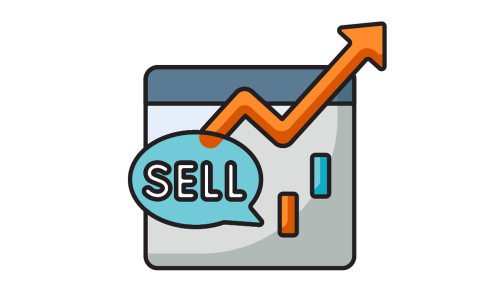

2. Cross-Selling:
Cross-selling involves promoting complementary products, add-ons, or services to customers who have already purchased a particular product or service. Here’s how you can leverage cross-selling opportunities:
- Product Bundling: Create bundled offerings that combine your SaaS solution with related products or add-ons. For example, if you offer project management software, you can bundle it with a time-tracking tool or a collaboration platform. Highlight the synergies and additional value customers would gain from using the bundled package.
- Targeted Recommendations: Utilize customer data and segmentation to provide targeted cross-selling recommendations. Analyze customer usage patterns, preferences, and purchase history to identify relevant products or add-ons that complement their existing solution.
- Personalized Messaging: Craft personalized messaging and communication to highlight the benefits of the cross-sell offering and how it enhances the customer’s overall experience.
- In-App Promotion: Promote cross-sell offerings within your SaaS solution itself. Display relevant suggestions or recommendations to customers while using the software, making it convenient for them to explore and consider the additional products or add-ons.
- Customer Education: Provide educational resources, such as tutorials, guides, or webinars, that showcase the value and benefits of cross-selling products or add-ons.
- Referral Programs: Implement referral programs that incentivize existing customers to refer new customers.
Final Thoughts:
Implementing effective strategies to drive SaaS sales and revenue requires a comprehensive approach focusing on understanding customer needs, providing exceptional experiences, and maximizing value. You can enhance customer acquisition and conversion rates by leveraging the various techniques discussed, such as optimizing the sales process, showcasing social proof, personalizing messaging, reducing friction, and implementing clear pricing options.
It’s important to recognize that these strategies are not standalone solutions but elements of a cohesive sales and customer success approach. By combining these techniques and tailoring them to your specific SaaS solution and target market, you can create a robust sales strategy that drives growth, fosters customer loyalty, and positions your company for success in the competitive SaaS industry.
By implementing these best practices and maintaining a customer-centric focus, you can build a strong foundation for sustainable growth, profitability, and customer satisfaction in the ever-evolving world of SaaS.



Systeme.io
Systeme.io is more than just a sales funnel builder. It’s an all-in-one marketing platform that lets you create and manage everything you need for your online business. From landing pages, websites, and sales funnels to email marketing, courses, and blogs, Systeme.io has you covered. And the best part is, you can get started for free with their Free Plan Forever.
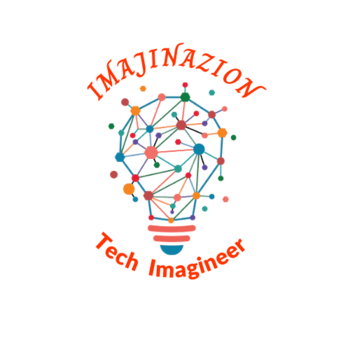
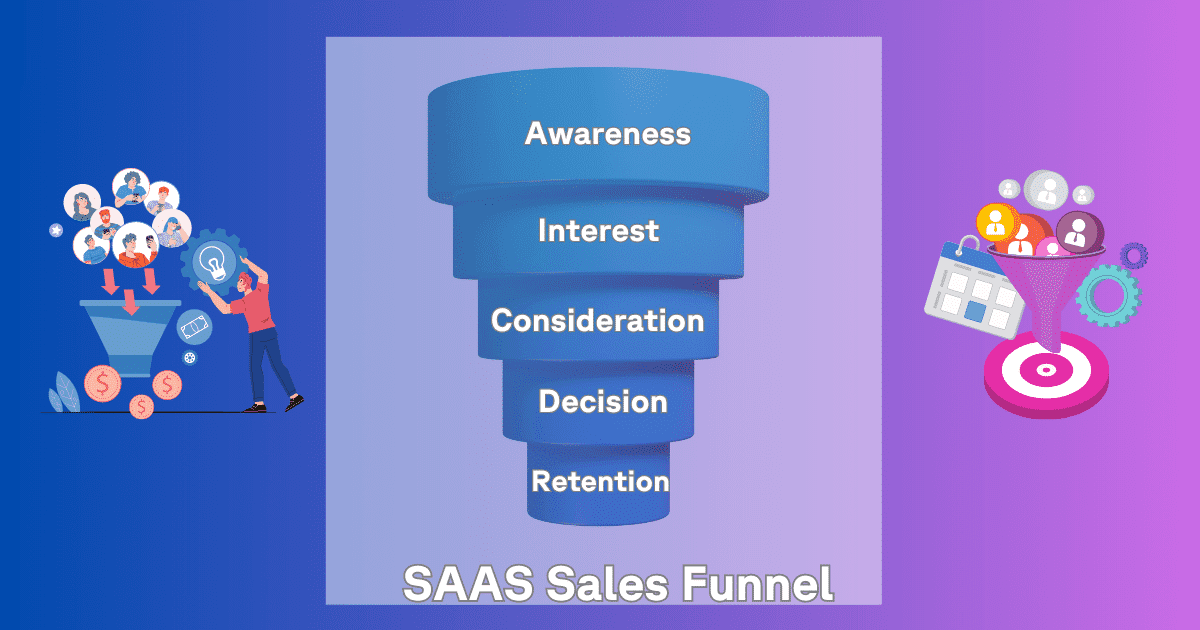

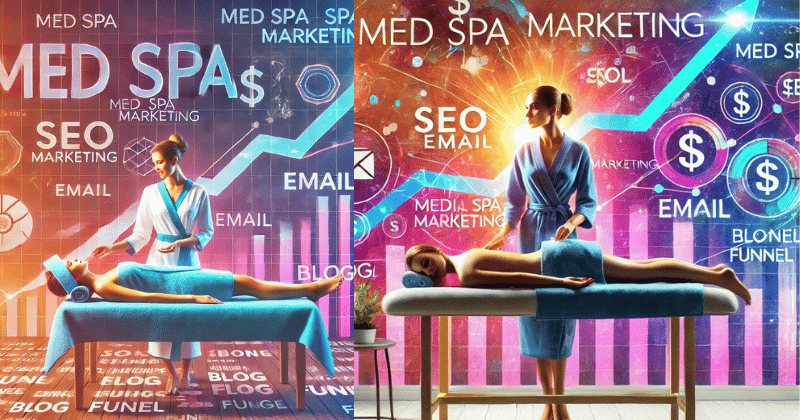
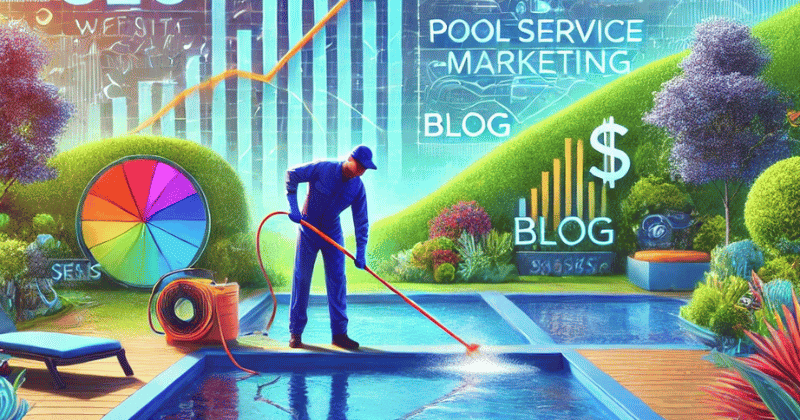

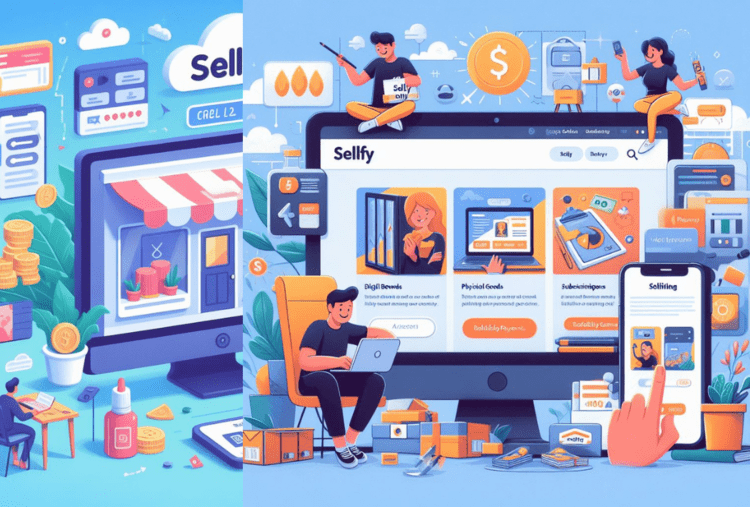
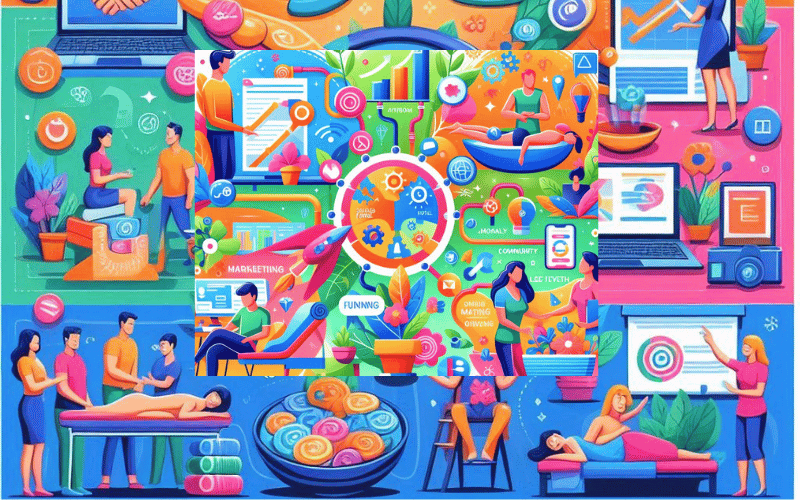


Excellent post. I was checking continuously this blog and I’m impressed! Extremely helpful info specifically the last part 🙂 I care for such information much. I was looking for this particular information for a very long time. Thank you and good luck.